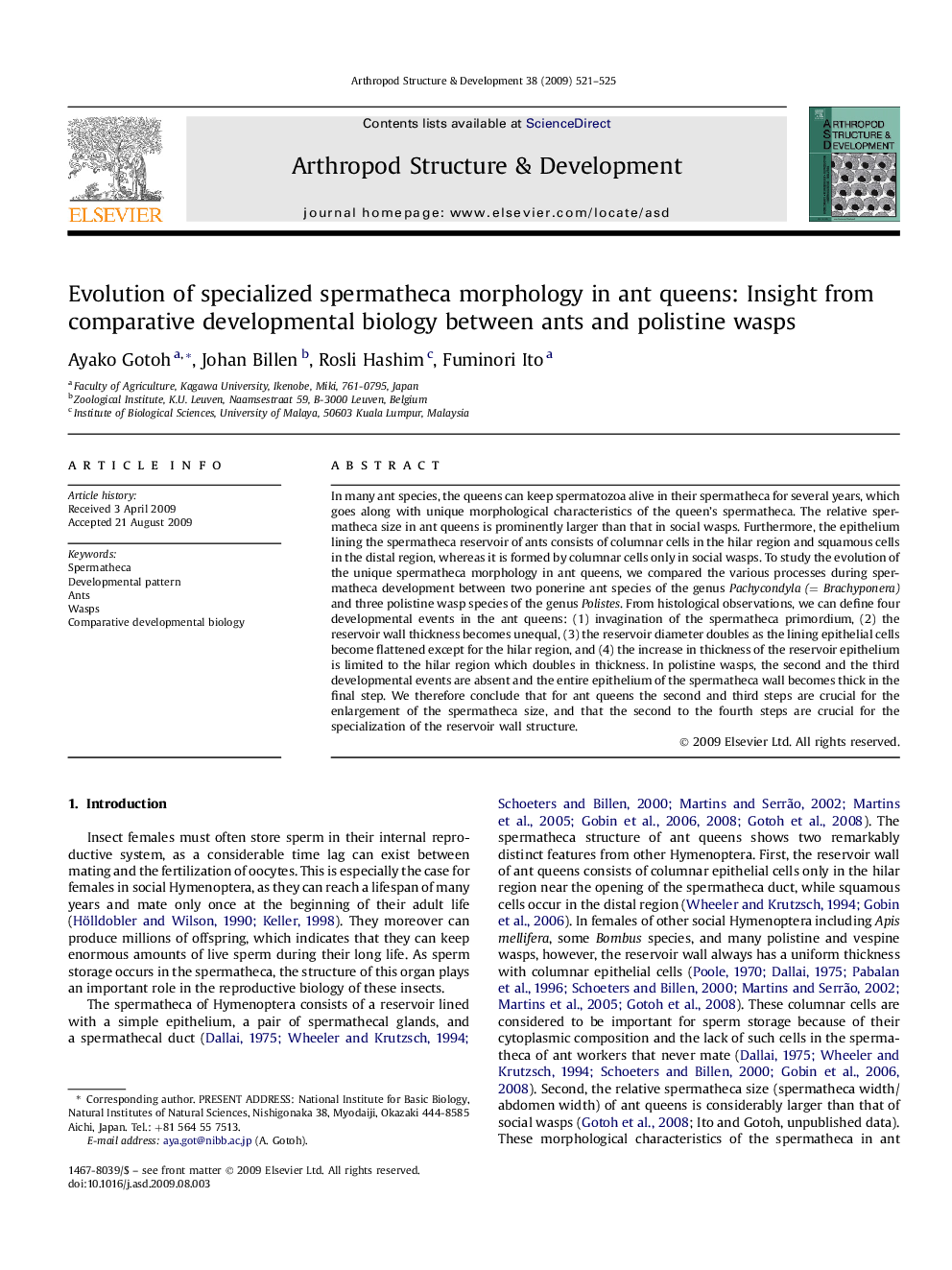| Article ID | Journal | Published Year | Pages | File Type |
|---|---|---|---|---|
| 2778829 | Arthropod Structure & Development | 2009 | 5 Pages |
In many ant species, the queens can keep spermatozoa alive in their spermatheca for several years, which goes along with unique morphological characteristics of the queen's spermatheca. The relative spermatheca size in ant queens is prominently larger than that in social wasps. Furthermore, the epithelium lining the spermatheca reservoir of ants consists of columnar cells in the hilar region and squamous cells in the distal region, whereas it is formed by columnar cells only in social wasps. To study the evolution of the unique spermatheca morphology in ant queens, we compared the various processes during spermatheca development between two ponerine ant species of the genus Pachycondyla (= Brachyponera) and three polistine wasp species of the genus Polistes. From histological observations, we can define four developmental events in the ant queens: (1) invagination of the spermatheca primordium, (2) the reservoir wall thickness becomes unequal, (3) the reservoir diameter doubles as the lining epithelial cells become flattened except for the hilar region, and (4) the increase in thickness of the reservoir epithelium is limited to the hilar region which doubles in thickness. In polistine wasps, the second and the third developmental events are absent and the entire epithelium of the spermatheca wall becomes thick in the final step. We therefore conclude that for ant queens the second and third steps are crucial for the enlargement of the spermatheca size, and that the second to the fourth steps are crucial for the specialization of the reservoir wall structure.
